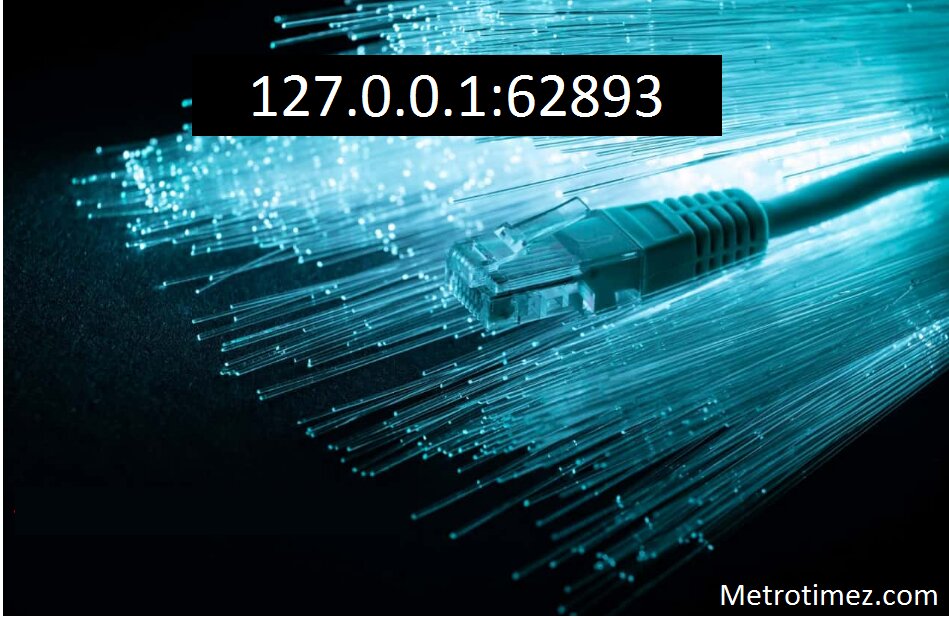
Introduction
Ever wondered what “127.0.0.1:62893” means when you see it on your computer? You might think it looks like a jumble of numbers, but it’s a crucial part of how computers communicate internally. In this article, we’ll break down the mystery of 127.0.0.1:62893, explain what it means, and why it’s important in the world of networking and web development.
Understanding Localhost
Definition of Localhost
“Localhost” is a term that refers to the computer you’re currently using. In other words, when you type “localhost” into your web browser or use it in a command, you’re asking your computer to talk to itself.
Uses of Localhost in Web Development
Developers use localhost to test applications locally, without making them publicly available on the internet. It’s like a private sandbox where they can play and experiment without outside interference.
The Significance of 127.0.0.1
Why 127.0.0.1 is Called the Loopback Address
127.0.0.1 is a special IP address known as the “loopback” address. When a computer refers to 127.0.0.1, it’s sending a message back to itself. Think of it as writing yourself a letter—your computer does this to test network functionality and ensure everything is running smoothly.
Common Applications of 127.0.0.1
The loopback address is frequently used for testing network applications, running local servers, and debugging programs. It’s a safe space for developers to check their code without external factors getting in the way.
Exploring the Port Number: 62893

What is a Port Number?
A port number is a way for computers to identify specific processes or services. Think of it as an apartment number in a building. The IP address is the building, and the port number directs the message to the correct room.
How Port 62893 Fits into the Networking Picture
Port 62893 is just one of many available ports that can be used for various purposes. It’s often assigned dynamically by a computer or application for temporary use.
Combining 127.0.0.1 and Port 62893
How Localhost and Ports Work Together
When you see “127.0.0.1:62893,” it means the computer is communicating with itself on port 62893. This combination is essential for local testing and running services like web servers or databases in a controlled environment.
Examples of When You Might See 127.0.0.1:62893
You might encounter “127.0.0.1:62893” when setting up a local web server, testing an application, or troubleshooting network issues.
Benefits of Using Localhost and Specific Ports
Safe Testing Environment
Using “127.0.0.1” with a port number provides a safe environment for developers to test applications without exposing them to the outside world. It’s like having a private laboratory where you can experiment without any risk.
Faster Development Cycle
By testing locally, developers can identify and fix issues quickly, leading to a more efficient development process.
Common Uses for 127.0.0.1 in Everyday Networking
Testing New Web Applications
When developers create new web applications, they often test them locally using “127.0.0.1” to ensure they work correctly before making them live.
Running Development Servers Locally
Web developers often use localhost to run servers on their machines. This allows them to see how their applications will perform in a real-world setting without exposing them to the internet.
Troubleshooting 127.0.0.1:62893 Issues
Common Problems
Sometimes, you might encounter errors when trying to access “127.0.0.1:62893.” Common issues include port conflicts, firewall settings, or misconfigured software.
Solutions and Best Practices
To fix these issues, check if the port is already in use, adjust firewall settings, or consult software documentation for specific configurations.
Security Aspects of Using 127.0.0.1:62893
Is it Safe to Use?
Yes, using “127.0.0.1” is generally safe as it restricts communication to your own computer. However, be cautious of potential security risks like exposing sensitive data if not properly configured.
Security Precautions to Take
Always keep your software up-to-date, use strong passwords, and avoid running unnecessary services on your localhost.
Advanced Uses of 127.0.0.1 and Ports
Load Balancing
Localhost and ports can be used in advanced networking setups, such as load balancing, to distribute traffic across multiple servers.
Local Proxy Servers
You can set up a local proxy server on “127.0.0.1” to filter or control traffic before it reaches its destination.
How to Access 127.0.0.1:62893
Using a Web Browser
Simply type “127.0.0.1:62893” into your web browser’s address bar to access a service running on that port.
Using Command Line Tools
You can also use command line tools like curl or telnet to interact with “127.0.0.1:62893” directly from your terminal.
How Developers Use Localhost for Testing
Setting Up Localhost Environments
Developers set up localhost environments to simulate real-world conditions and test how their applications perform under various scenarios.
Best Practices for Localhost Testing
Always document your settings, monitor resource usage, and clean up after testing to keep your environment efficient.
Real-World Examples of 127.0.0.1 in Action
Development Scenarios
From building web applications to testing APIs, 127.0.0.1 is essential for many development tasks.
Educational Purposes
127.0.0.1 is often used in computer science education to teach students about networking and server management.
Conclusion
127.0.0.1:62893 might seem like a random string of numbers, but it plays a crucial role in the world of networking and development. By understanding how localhost and ports work together, you can unlock new possibilities in web development and troubleshooting.
Frequently Asked Questions About 127.0.0.1:62893
- What does 127.0.0.1:62893 represent?
It represents a local IP address (127.0.0.1) and a specific port (62893) used for internal communication within your computer.
- Is 127.0.0.1:62893 safe to use?
Yes, it’s generally safe as it restricts communication to your own computer.
- How do I access 127.0.0.1:62893?
You can access it using a web browser or command line tools like curl.
- Why do developers use 127.0.0.1?
To test applications locally in a secure environment before going live.
- What should I do if I encounter issues with 127.0.0.1:62893?
Check for port conflicts, adjust firewall settings, and ensure the correct software configuration.